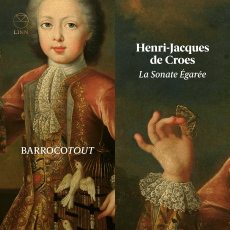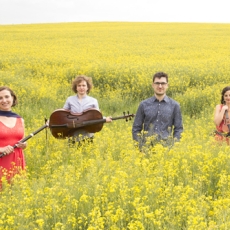BarrocoTout - de Croes: La Sonate Égarée - musica Dei donum
There was a time that Flanders was the birthplace of some of the greatest composers of their time. I am referring here, of course, to the 15th and 16th centuries, when representatives of the so-called Franco-Flemish school dominated the whole of Europe. Their influence lasted well unto the time that the dominance of the polyphony was broken and a new concertante style emerged in Italy. Since then the music scene in Flanders was in decline. It was mostly music from elsewhere which was performed. Music by home-grown composers was largely written under French or Italian influence. One of the most important masters was Henry Du Mont, but he worked mainly in Paris. Names which are not totally unfamiliar are Nicolas Hotman, Nicolaes a Kempis, Philippus van Wichel and especially Carolus Hacquart. It is telling that the latter worked most of his life in Amsterdam.
During the 18th century an improvement in the economic situation led to a rise in the level of music-making. Among the best-known names in the field of instrumental music are the members of the Loeillet family. In comparison, only a few music lovers may have heard of Henri-Jacques De Croes. He was a prolific composer, but unfortunately a considerable part of his oeuvre, such as 53 masses and 63 motets, has been lost.
De Croes was born in Antwerp in 1705, where he also received his first musical training. In 1723 he entered the chapel of the St Jacobskerk as first violinist. In 1729 he moved to Frankfurt am Main, where he entered the service of the house of Thurn und Taxis. In 1743, his employer, Prince Anselm Franz, was appointed Principal Commissioner of the Habsburg Emperor, and as a result the court moved to Regensburg. At that time De Croes occupied the post of musical director, but decided to move to Brussels instead. The Governor of the Austrian Netherlands, Charles of Lorraine, had invited him to become the director of his orchestra, first as substitute for the old and sick Jean-Joseph Fiocco. The Governor wanted him to improve the orchestra's quality, and De Croes was the right man for the job, as he had been responsible for turning the Thurn und Taxis chapel to one of the best in the Holy Roman Empire.
De Croes's task was not easy. The Governor wanted a better orchestra, but did not provide the money De Croes needed. Moreover, he wanted a different style: the baroque idiom should make way for the galant style which dominated music making at the court of Louis XV. De Croes did take his job seriously: only musicians who did meet his standards, were given the opportunity to audition. De Croes tried to improve the financial situation of his musicians, and when one of them died, he gave his son music lessons for free, so that in time he could join the orchestra.
De Croes's instrumental output comprised a number of symphonies, which are all lost. Only chamber music has been preserved: three sets of trio sonatas and four collections of divertissements for two violins, viola and basso continuo. The trio sonatas Op. 1 and Op. 3 are for two violins and basso continuo, but the latter was reprinted with the indication that the violin parts could be played at transverse flutes. The trio sonatas Op. 5 also offer this alternative, and this reflects the fast growing popularity of the flute among amateurs.
The present disc includes the complete Op. 5, comprising six sonatas, originally published between 1735 and 1746. Only a single copy has survived, which is held in the music library of the University of Virginia. Three of the sonatas are duplications of sonatas from the Op. 1. The set seems to be constructed in two sections, each consisting of two sonatas in three movements (fast, slow, fast) and a third in four, following the Corellian sonata da chiesa model and including a fugue as their second movement. The first three sonatas all end with a menuet. Although these sonatas are written in the galant idiom, they are more than just easy-listening stuff. There is certainly room for counterpoint, and some movements are unashamedly virtuosic.
This is the debut disc of the ensemble BaroccoTout. It consists of four players who met at the Brussels conservatoire and together won several prizes, for instance in 2017 at the York Early Music International Young Artists Competition. They deliver sparkling and sensitive performances, depending on the character of a sonata or movement. They could have hardly made a better debut than with this disc, which deserves attention for the level of performances, but certainly also for the character of the music. De Croes's oeuvre should be further investigated, as these sonatas prove that he was a fine composer.

